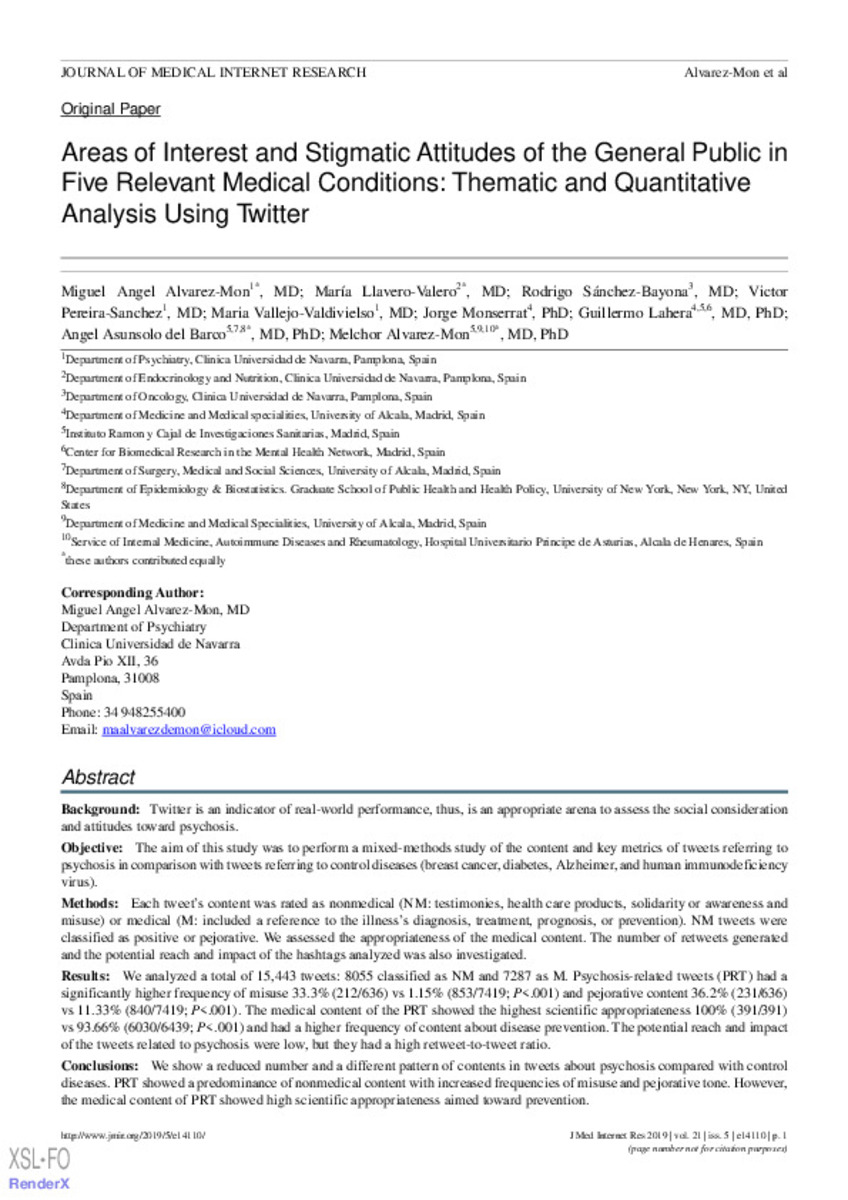Areas of interest and stigmatic attitudes of the general public in five relevant medical conditions: Thematic and quantitative analysis using twitter
Palabras clave :
Social stigma
Social media
Psychosis
Breast cancer
HIV
Dementia
Public opinion
Diabetes
Fecha de publicación :
2019
Editorial :
JMIR Publications Inc.
Nota:
This is an open-access article distributed under the terms of the
Creative Commons Attribution License (https://creativecommons.org/licenses/by/4.0/), which permits unrestricted use, distribution,
and reproduction in any medium, provided the original work, first published in the Journal of Medical Internet Research, is
properly cited. The complete bibliographic information, a link to the original publication on http://www.jmir.org/, as well as this
copyright and license information must be included.
Cita:
Álvarez-Mon, M.Á. (Miguel Ángel); Llavero-Valero, M. (María); Sanchez-Bayona, R. (Rodrigo); et al. "Areas of interest and stigmatic attitudes of the general public in five relevant medical conditions: Thematic and quantitative analysis using twitter". Journal of Medical Internet Research. 21 (5), 2019, e14110
Aparece en las colecciones:
Estadísticas e impacto
0 citas en

0 citas en

Los ítems de Dadun están protegidos por copyright, con todos los derechos reservados, a menos que se indique lo contrario.








